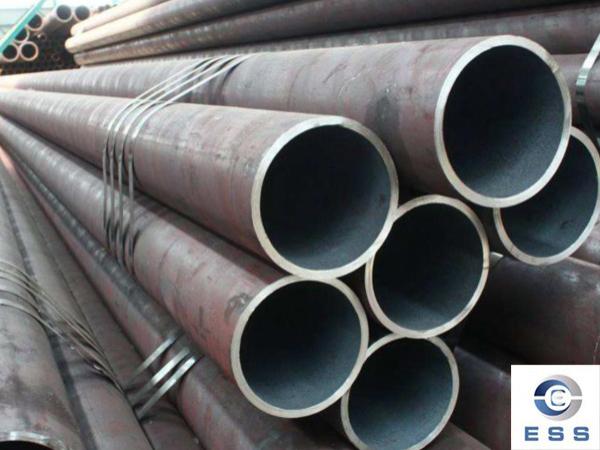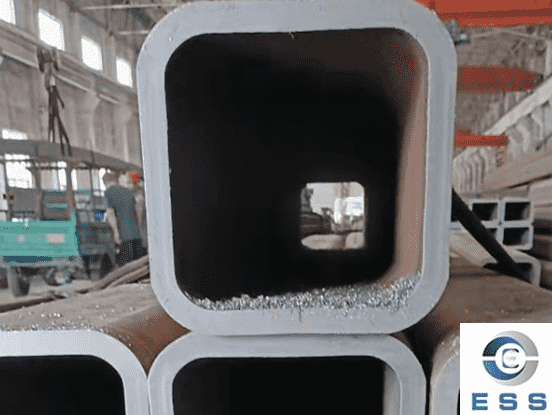What might affect carbon steel pipe tensile strength?
Carbon steel is a commonly used material due to its excellent mechanical properties, cost-effectiveness and flexibility. Carbon steel pipe is commonly used in industries that need to convey gases, fluids and solids, so its tensile strength is a key characteristic for its function. Tensile strength is measured in pounds per square inch (psi) or megapascals (MPa) and is the maximum load a product can withstand without irreversible deformation or failure. For carbon steel pipes, the tensile strength indicates its ability to withstand external and internal forces during installation, use, and transportation.

What are the factors that affect the tensile strength of carbon steel pipe?
The microstructure of carbon steel, including the arrangement of grains and phases, strongly affects its tensile strength. Common microstructures in carbon steels include ferrite, bainite, martensite, and pearlite. Martensite, formed by rapid cooling, has high strength but low ductility, while pearlite provides a balance between strength and ductility. Cooling rates during manufacturing processes such as rolling and forming affect the final microstructure and thus tensile strength. The production process used to produce carbon steel pipe affects its tensile strength. Processes such as hot rolling, cold rolling and extrusion generate residual stress, grain orientation and texture that affect mechanical properties. Cold working procedures can increase tensile strength through pressure hardening, but excessive cold working can also lead to brittleness.
Contaminants and non-metallic additions in steel, such as sulfur, phosphorus and oxides, can adversely affect its tensile strength. These contaminants can weaken the material, leading to loss of strength and increased likelihood of cracking and failure. Manufacturers usually intend to control the level of these impurities in order to maintain the desired mechanical properties. The size and shape of carbon steel pipe affects its tensile strength. Factors such as wall density, size and cross-sectional shape affect tension cycles and deformation habits. Thicker walls generally result in higher tensile strength due to increased product volume, but they also result in increased weight and reduced flexibility.
The workplace of carbon steel pipe can affect its tensile strength through mechanisms such as corrosion and oxidation. Rust can cause localized loss of material, impairing its strength, while oxidation when heated can lead to fouling and loss of mechanical residential or commercial performance. Proper surface preparation, protection and material selection are important to mitigate these effects. The carbon content of carbon steel greatly affects its mechanical residential or commercial properties, including tensile strength. Carbon is a common strengthening element in steel, increasing its hardness and strength.
The tensile strength of carbon steel tends to increase with the addition of carbon material. However, too much carbon material can also lead to brittleness, which reduces the strength and ductility of the product. Alloying elements are often added to carbon steel for specific purposes. Common alloying components include manganese, silicon, chromium, nickel and molybdenum. These constituents can alter the steel's microstructure, grain size, and phase structure, thereby affecting its tensile strength. For example, manganese increases the hardenability of steel, while chromium increases rust resistance. Alloying element selection and concentrations require careful consideration to achieve the ideal balance of residential or commercial properties. Annealing, quenching, tempering and other heat treatment processes have a profound impact on the microstructure and mechanical properties of carbon steel. Annealing involves heating the steel and then cooling it slowly, refining the grain structure and reducing internal stresses, which increases tensile strength and ductility. Tempering and saturation can increase hardness and strength while retaining some toughness. Effects and Applications The tensile strength of carbon steel pipe directly affects its suitability for a variety of applications.
Low tensile strength tubing may be suitable for less demanding applications such as water circulation, while high tensile strength tubing is critical in industries such as oil and gas that experience significant pressure and axial loads. In pipelines transporting hydrocarbons such as oil and natural gas, the tensile strength of carbon steel pipes is critical to ensuring pipeline stability and preventing catastrophic failure. Offshore installations and subsea pipelines are exposed to harsh environmental conditions and require high tensile strength pipelines. In structural applications such as building construction and infrastructure development, carbon steel pipes with proper tensile strength provide the necessary assistance and load-bearing capacity.
Similarly, in production, carbon steel pipes are used to transport base materials and finished products, and the pipes need to have sufficient tensile strength to withstand the force exerted during material transportation. Carbon steel piping is an important component in different markets where its tensile strength plays an important role in its reliability and efficiency. From carbon content and alloying elements to manufacturing processes and environmental conditions, each element affects the complexity of a carbon steel pipe mechanical home.
Conclusion
As innovation and product science continue to evolve, so does our ability to customize carbon steel pipe and other mechanical housing with the required tensile strength. The continuous pursuit of ingenious manufacturing methods, precise alloying methods and detailed quality assurance steps ensure that carbon steel pipes continuously meet the diverse and demanding requirements of modern industry.













 Eastern Steel Manufacturing Co.,Ltd not only improve product production and sales services, but also provide additional value-added services. As long as you need, we can complete your specific needs together.
Eastern Steel Manufacturing Co.,Ltd not only improve product production and sales services, but also provide additional value-added services. As long as you need, we can complete your specific needs together.










